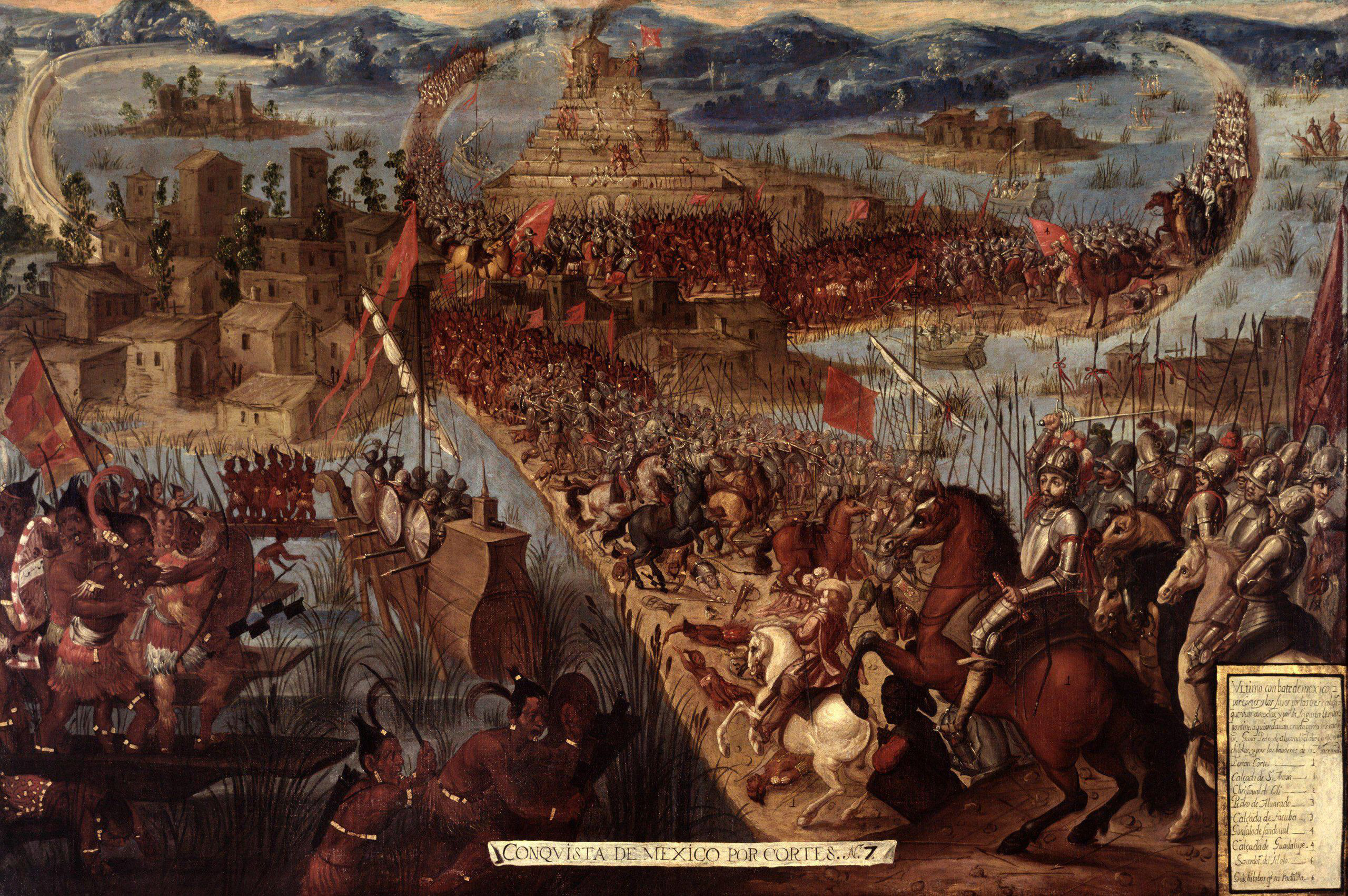Martin Jacobs is professor of rabbinic studies in the Department of Jewish, Islamic and Middle Eastern Studies.
This year, the Mexican calendar marks both a quincentennial and a bicentennial whose dates bookend the country’s colonial history: the 500th anniversary of the fall of Tenochtitlán — today’s Mexico City — to the Spanish conquistadors, and 200 years since Mexico’s independence from Spain. Officially, modern Mexico celebrates its hybrid (mestizo) identity that is an amalgamation of its indigenous and Spanish roots. But to what extent Mexicans can embrace the legacy of both the conquered and the conquerors continues to be a matter of controversy. In fact, shortly after the 1521 conquest of the Aztec Empire, Spanish intellectuals already debated the rights and treatment of the native people by the conquistadors. Much less known today is the strong, yet complex response the Spanish expansion received from some Sephardic Jews who had been expelled from Spain in 1492, the same year in which Columbus set out on his first voyage. Notably, both the Jewish expulsion and Columbus’ expedition were authorized by the same Spanish monarchs: Isabella I and Ferdinand II.
One such Sephardic Jew who was clearly intrigued by Spain’s acquisition of a transatlantic empire was the Genoese physician and chronicler Joseph ha-Kohen. Born in 1496 during his parents’ protracted migration from Spain to Italy, he grew up in Genoa, Columbus’ hometown and a maritime republic that provided essential support to Spain’s imperial adventures. The news ha-Kohen received there about the New World caused him to order one of the first print editions of Francisco López de Gómara’s two-volume history of the Spanish expansion. The book’s first part, titled General History of the Indies, combines an account of Columbus’ naval expeditions with a geographical description of the Americas. The second part, The Conquest of Mexico, chronicles the Spanish invasion of the Aztec Empire and glorifies in this context Hernán Cortés, whose chaplain and secretary Gómara had later become. Clearly, ha-Kohen was so captivated by what he read that he decided to produce a Hebrew version of Gómara’s work.
When adapting his Spanish source for a Jewish audience, the translator took considerable liberty, abbreviating and omitting various passages, at times even subverting its triumphalist message. Through these interventions into the text, ha-Kohen expresses an ambivalent attitude toward Gómara’s account, amplifying the information it provides about the New World while simultaneously countering its religious message.

For instance, ha-Kohen was evidently fascinated by Gómara’s detailed description of Tenochtitlán, the Aztec capital and the largest city in the pre-Columbian Americas. As a highly organized polity and center of commerce, Tenochtitlán suggested the civilized nature of the Aztecs, as opposed to their barbarism. However, Gómara portrays them as savages based on religious difference: Polytheism, human sacrifice and the ritual consumption of human flesh evoked strong revulsion among early modern Europeans. This perceived barbarism of the American “Indians” served Gómara and other proponents of Spanish imperialism as a legal, moral and theological justification for their subjugation. By putting an end to these reprehensive practices and converting the Amerindians to Christianity, Spain fulfilled a civilizing mission, according to Gómara.
Here, however, ha-Kohen followed his source only in part. Like Gómara, he praises Cortés for outlawing religious practices such as idol worship, human sacrifice and so-called cannibalism. But since his parents had fled Spain to avoid compulsory conversion, ha-Kohen had little sympathy for a Spanish ideology that aimed to impose Christianity on the inhabitants of the New World. What is more, to the Jewish translator, both indigenous religion and Catholicism are equally “idolatrous.” Where Gómara applauds the conquistadors for converting Aztec temples into churches, ha-Kohen sees a mere replacement of one sort of “graven images” by another: crucifixes and statues of Saint Mary.
Where Gómara applauds the conquistadors for converting Aztec temples into churches, ha-Kohen sees a mere replacement of one sort of “graven images” by another: crucifixes and statues of Saint Mary.
Besides undermining the Christian ideology that underpins Gómara’s narrative, ha-Kohen also distances himself from some of the more outrageous aspects of Spanish colonialism such as indigenous enslavement. Time and again, he describes the forced labor of Native Americans in biblical language evoking the bondage of the Ancient Israelites in Egypt. In fact, in denouncing the enslavement of indigenous people, ha-Kohen echoes the criticism voiced by the Dominican friar Bartolomé de Las Casas, who first exposed the atrocities committed by the colonizers. Oscillating between praise and repudiation of Spain’s colonial project, ha-Kohen’s work reveals the spectrum of responses elicited by the Spanish expansion through an unusual prism: the lens of Sephardic exiles who had their own memories of abuse by the Spanish authorities.




